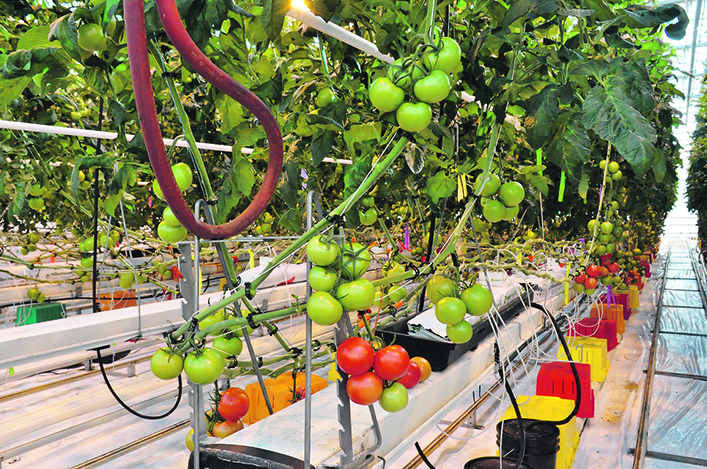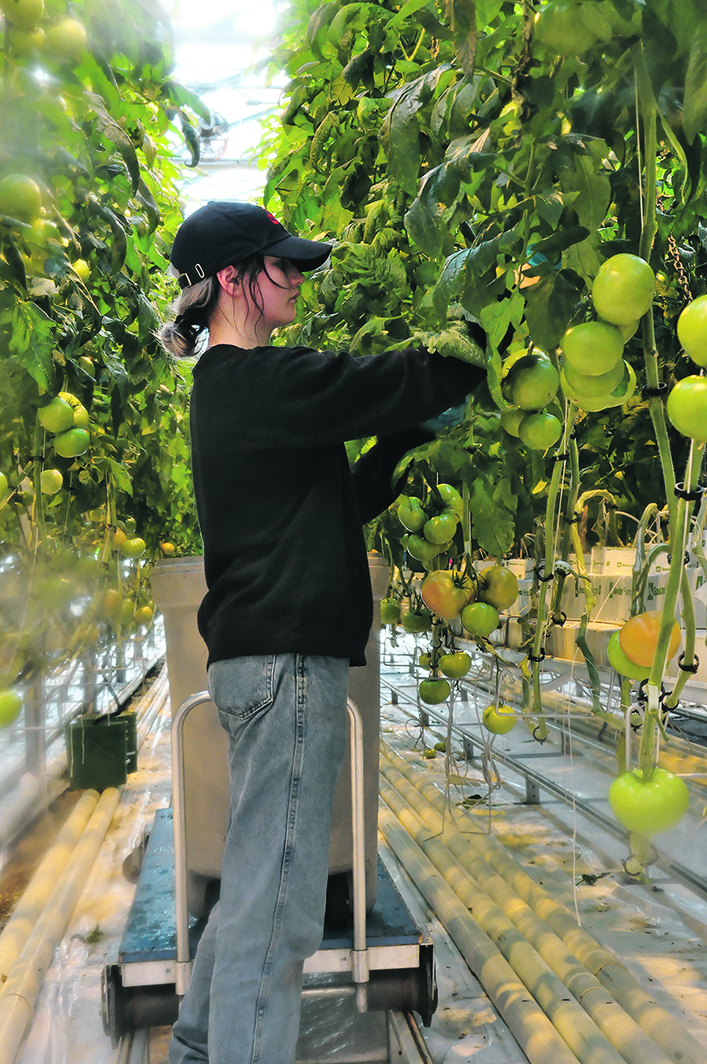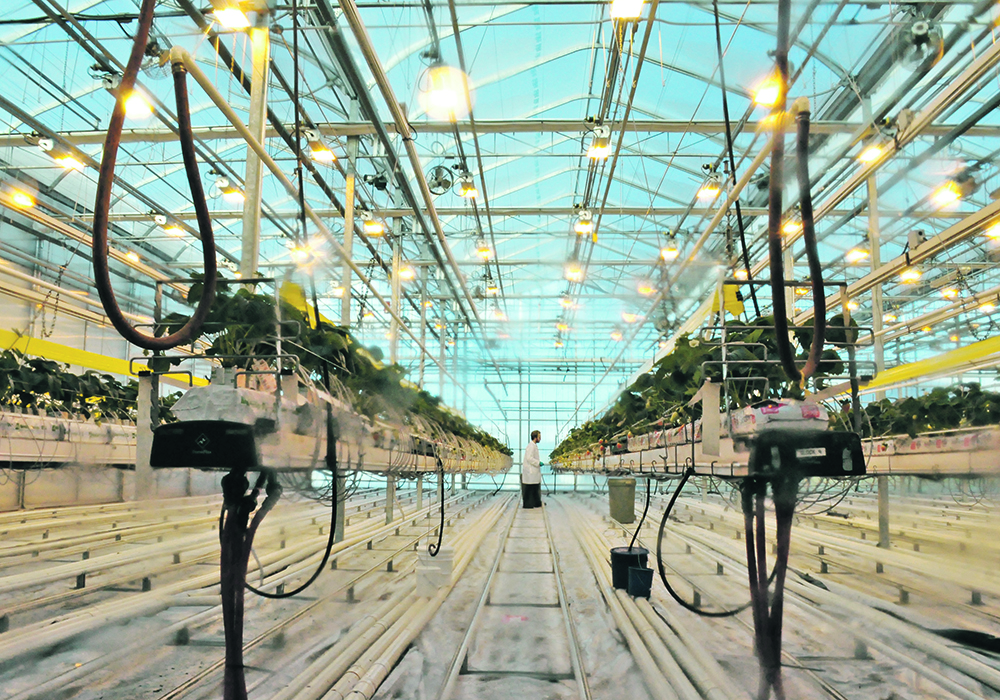Lethbridge College and Sunterra Farms use the research greenhouse at Brooks, Alta., to study improvements for sector
For more than 85 years, Alberta’s Crop Diversification Centre South based in Brooks, Alta., has been a mainstay in developing new varieties for dryland cultivation, irrigated acres and, more recently, greenhouse production.
As part of a 16-month partnership between Lethbridge College and Sunterra Farms at the centre, the facility’s greenhouse is researching tomato and strawberry varieties under a wide array of conditions to facilitate the province’s burgeoning greenhouse industry.
The research partnership has seen different varieties grown with a variety of substrates as well as under both poly sheeting and glass to measure production and determine which conditions make the most economical sense.
Megan Shapka, Lethbridge College director of research operations, said the partnership with the facility is to ensure there is validation to growing differing greenhouse varieties prior to commercialization of the products.
“The work that we do is not only exciting but it’s really important for industry,” she said. “We’re de-risking what producers are going to apply in their commercial operations. We can test different lighting prescriptions, varieties… and do that in Alberta-based conditions.”
Redcliff, Alta., known colloquially as the Greenhouse Capital of the Prairies, has long been a source of out-of-season vegetable varieties.
But with new greenhouses, including Sunterra’s Acme facility, coming online across the province, Shapka said, “the greenhouse industry in Alberta is really set to boom.
“Yes, there are a few big operations, but we don’t have a significant amount of greenhouse grown vegetables. It’s about 200, 300 acres in Alberta compared to 3,000 acres in Ontario.”
But she added the need for specific varieties adapted to Alberta conditions is an especially important aspect of the research.

“Continuing to explore what’s best for Alberta is important. Also new and upcoming is testing technologies that are coming to greenhouses,” said Shapka. “We are testing high quality lights and the impact that’s going to have, especially on winter production. We’re testing automation — there are robots running through some of these greenhouses.”
Nick Savidov, senior research scientist at Lethbridge College, said while there is a strong body of research already on greenhouse tomatoes, berry production is relatively new.
“We’ve seen in the last few years expansion in the area of greenhouse strawberries. But also, there are many other interesting potential crops,” he said, adding ginseng is one such variety with a potential to be grown.
But the ultimate goal is self-sufficiency when it comes to providing fresh vegetables to Albertans.
“I think we will be able to grow all our fresh vegetables in this province year-round and in order to minimize the risks, because people have to invest a lot of money, we need to run this research,” said Savidov. “We need to estimate if those investments are justified and how to improve the yields to the point that they become beneficial to growers.”
But with the Lethbridge College-Sunterra Farms research partnership coming to an end in the new year, it’s unclear what the future holds for the Brooks facility.
Savidov, who helped design the greenhouse more than three decades ago, said it’s an important facility that is well adapted to try new technologies to determine whether they will work practically and economically.
“This facility has a set-up to answer those questions using scientific methodology and showing not just impact on some occasional factors that gets some occasional variation,” he said.
Albert Cramer, president of the Alberta Greenhouse Growers Association and founder of Big Marble Farms, said the research being done in Brooks is relevant to the industry.
“The research Sunterra did with this — industry driven — I think is good,” he said. “Is it relevant to the industry? I think so.”

But as for the future of such research, Cramer added, he’s not so sure.
“That’s where the jury is out on it,” he said.
While there is a lot of work that has already been done on tomato varieties, Cramer said growing strawberries has an interesting potential.
“It’s a new commodity in our market and good on Sunterra for doing what they are doing because I think it’s a product we need to grow here. It’s not easy yet because the dynamics of what you can produce,” he said. “But tomatoes, peppers, cucumbers — that’s been pretty well established in how we grow.”
Cramer said recent events have shown the importance of locally grown produce.
The Alberta government announced in 2020 the agreement that will see Lethbridge College manage the Brooks greenhouse and use it for research by its students.
Future funding of research at the greenhouse will depend on funding from Alberta’s agriculture funding agency RDAR (Results Driven Agriculture Research).


















